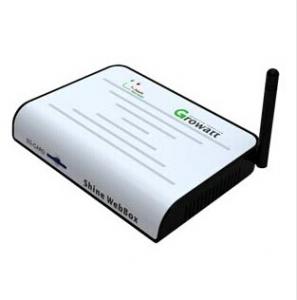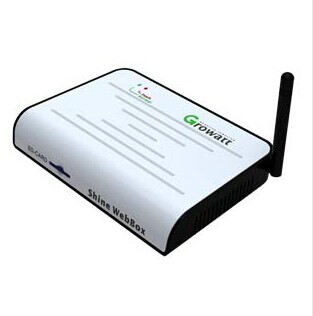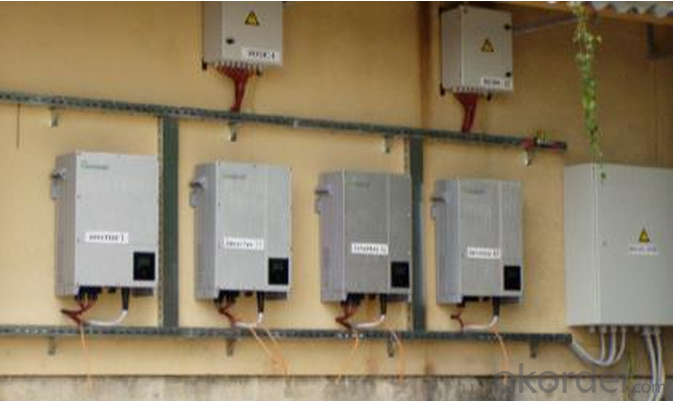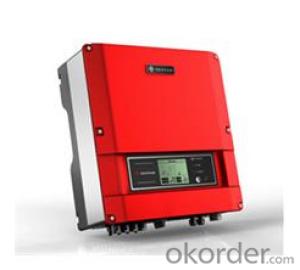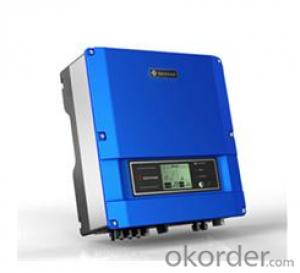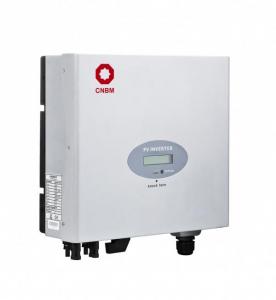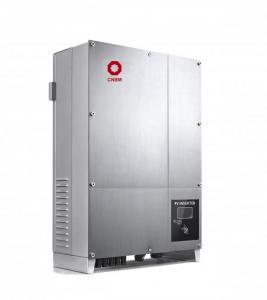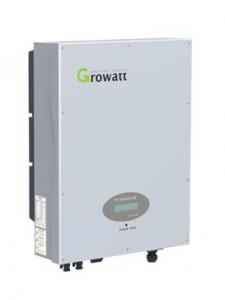Vevor Solar Inverter Monitor Shine Webbox, Solar System Monitor
- Loading Port:
- Shekou
- Payment Terms:
- TT OR LC
- Min Order Qty:
- 20 watt
- Supply Capability:
- 10000 watt/month
OKorder Service Pledge
OKorder Financial Service
You Might Also Like
- Monitor Shine WebBox, Solar System Monitor
A multi-functional and high-performance communication data logger
It is a cost-effective and compact monitoring device, specially designed for solar power plant. Using stable Linux operating system with high-speed CPU, smartly record your system features. Provide local storage, easy wireless and TCP/IP configuration, and present plant data over Internet.
>A multi-functional and high-performance communication data logger;
>Keep user informed of the system’s status at any time,
>Massive storage with flexible parameters setting, system information management, error prompt and record .
>Collects data and uploads information over the internet in near real-time to Growatt Shine Server platform.
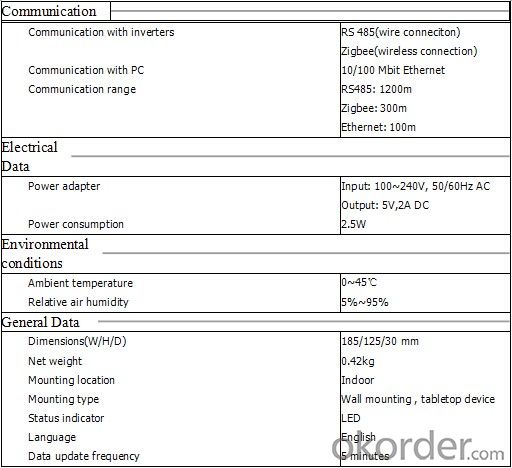
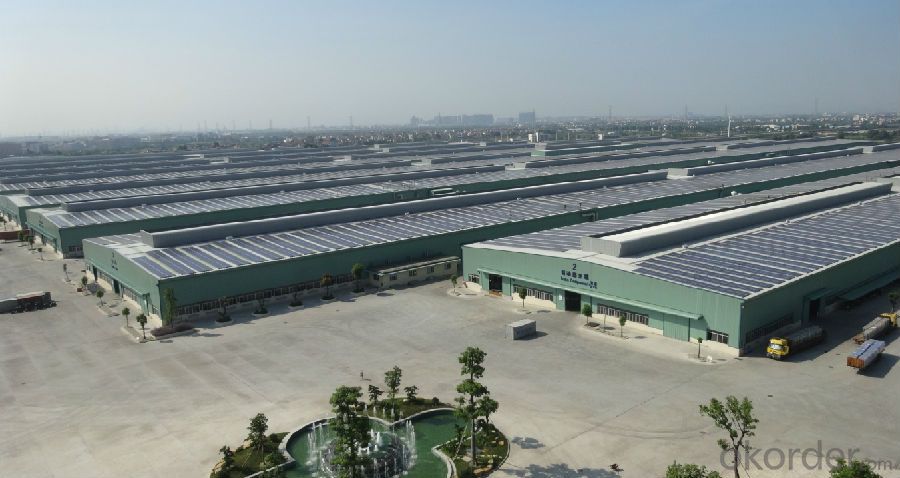
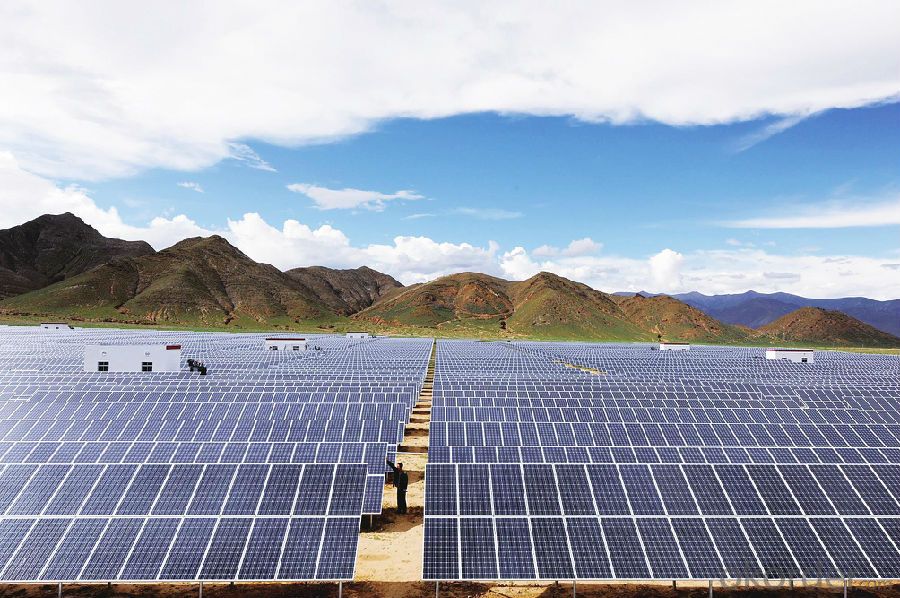
- Q: Can a solar inverter be used with a solar-powered irrigation system?
- Yes, a solar inverter can be used with a solar-powered irrigation system. A solar inverter is responsible for converting the direct current (DC) produced by the solar panels into alternating current (AC), which is required to power various electrical devices. In the case of a solar-powered irrigation system, the solar inverter can convert the DC generated by the solar panels into AC to power the irrigation pump or other electrical components of the system. This ensures that the solar energy captured by the panels can be effectively utilized for irrigation purposes.
- Q: What is the role of Maximum Power Point Tracking (MPPT) in a solar inverter?
- The role of Maximum Power Point Tracking (MPPT) in a solar inverter is to optimize the efficiency and output of the solar panels by continuously tracking and adjusting the operating point to the maximum power point. This ensures that the solar panels are operating at their highest possible power output, regardless of changes in environmental conditions. MPPT technology maximizes the utilization of solar energy and improves the overall performance of the solar inverter system.
- Q: Can a solar inverter be used with concentrated photovoltaic thermal systems?
- Yes, a solar inverter can be used with concentrated photovoltaic thermal (CPVT) systems. CPVT systems combine concentrated solar thermal technology with photovoltaic cells to generate both electricity and heat. The solar inverter converts the direct current (DC) produced by the photovoltaic cells into alternating current (AC) that can be used to power electrical devices or be fed into the grid. Therefore, a solar inverter is an essential component in the integration of CPVT systems with the electrical grid or for utilization in standalone applications.
- Q: What is the role of a solar inverter in reactive power compensation?
- The role of a solar inverter in reactive power compensation is to monitor and regulate the reactive power flow in the electrical system. It helps maintain a power factor closer to unity by injecting or absorbing reactive power as needed. This is crucial for improving the overall efficiency and stability of the grid, as well as reducing voltage fluctuations and line losses.
- Q: What is the maximum current output of a solar inverter?
- The maximum current output of a solar inverter depends on its size and specifications. In general, smaller residential inverters may have a maximum output current of around 8-12 amps, while larger commercial or utility-scale inverters can go up to several hundred amps. It is important to select an inverter that matches the specific requirements of the solar PV system to ensure optimal performance and safety.
- Q: What certifications should I look for when choosing a solar inverter?
- When choosing a solar inverter, it is important to look for certifications such as UL 1741, which ensures the inverter meets safety and performance standards. Additionally, certifications like IEEE 1547 and IEC 61727 validate the inverter's compliance with grid interconnection requirements.
- Q: Can a solar inverter be used with a wireless communication system?
- Yes, a solar inverter can be used with a wireless communication system. Many modern solar inverters are equipped with built-in wireless communication capabilities, such as Wi-Fi or Bluetooth, to enable monitoring and control of the solar system remotely. This allows users to access real-time data, adjust settings, and receive notifications about their solar energy production and consumption through a wireless connection.
- Q: How much maintenance is required for a solar inverter?
- Solar inverters require regular maintenance to ensure optimal performance and longevity. The frequency and level of maintenance may vary depending on the specific make and model of the inverter, as well as environmental factors. Generally, maintenance tasks include regular cleaning to remove dust and debris, checking and tightening electrical connections, inspecting for any signs of wear or damage, and updating software or firmware as needed. It is recommended to follow the manufacturer's guidelines and have a professional solar technician perform periodic maintenance to maximize the efficiency and reliability of the solar inverter.
- Q: How does a solar inverter handle voltage fluctuations?
- A solar inverter handles voltage fluctuations by continuously monitoring the incoming solar power and adjusting its output voltage accordingly. It uses advanced electronics and control algorithms to ensure that the output voltage remains stable and within a specified range, regardless of variations in the input voltage. This allows it to provide a consistent and safe supply of electricity to connected devices, even in the presence of voltage fluctuations.
- Q: What is the role of isolation in a solar inverter?
- The role of isolation in a solar inverter is to provide safety and protection by electrically separating the DC input side (solar panels) from the AC output side (grid or load) to prevent any potential hazards such as electrical shocks, short circuits, or ground faults. It also helps in reducing noise interference and improving the overall performance and efficiency of the inverter.
Send your message to us
Vevor Solar Inverter Monitor Shine Webbox, Solar System Monitor
- Loading Port:
- Shekou
- Payment Terms:
- TT OR LC
- Min Order Qty:
- 20 watt
- Supply Capability:
- 10000 watt/month
OKorder Service Pledge
OKorder Financial Service
Similar products
Hot products
Hot Searches
Related keywords
